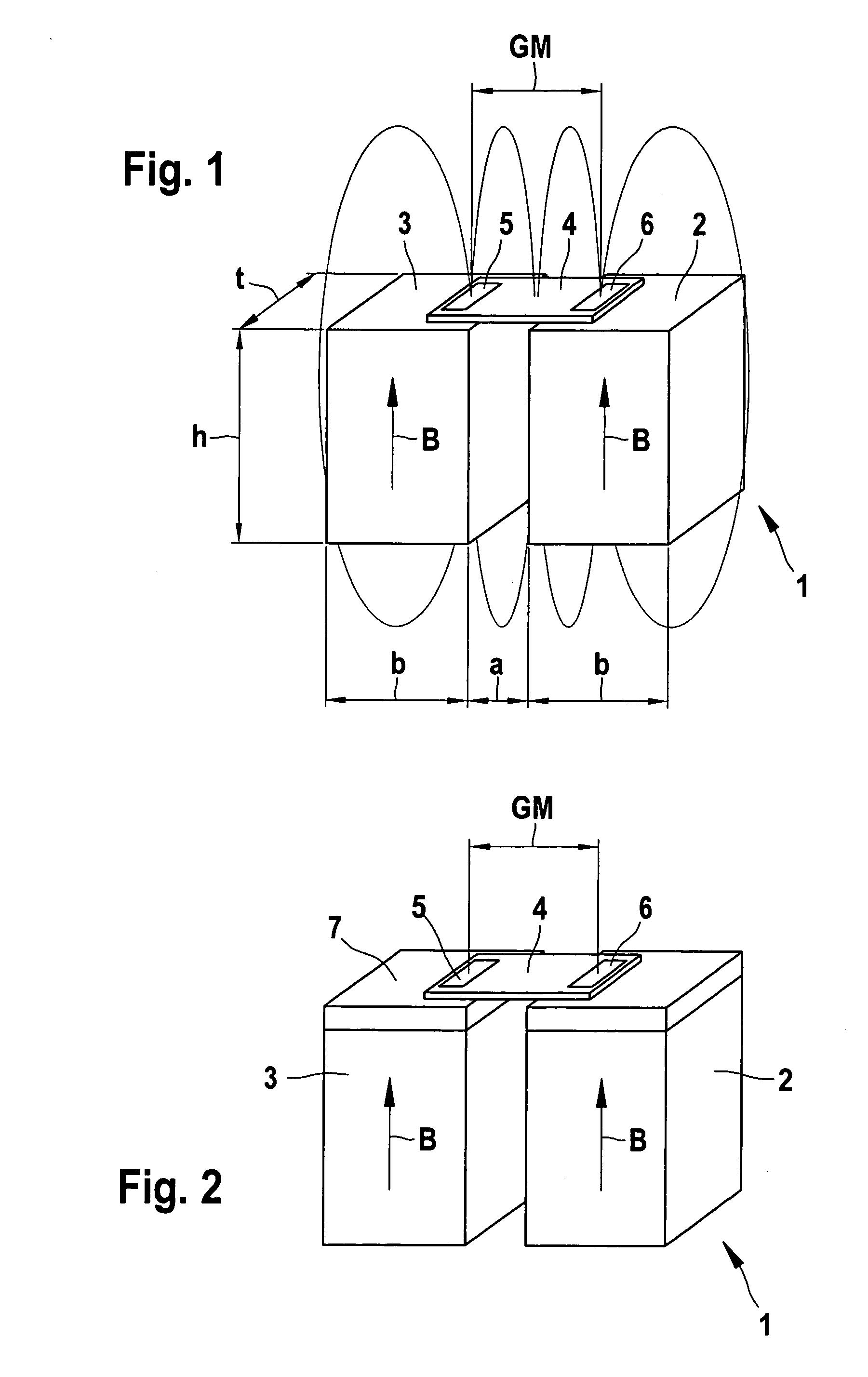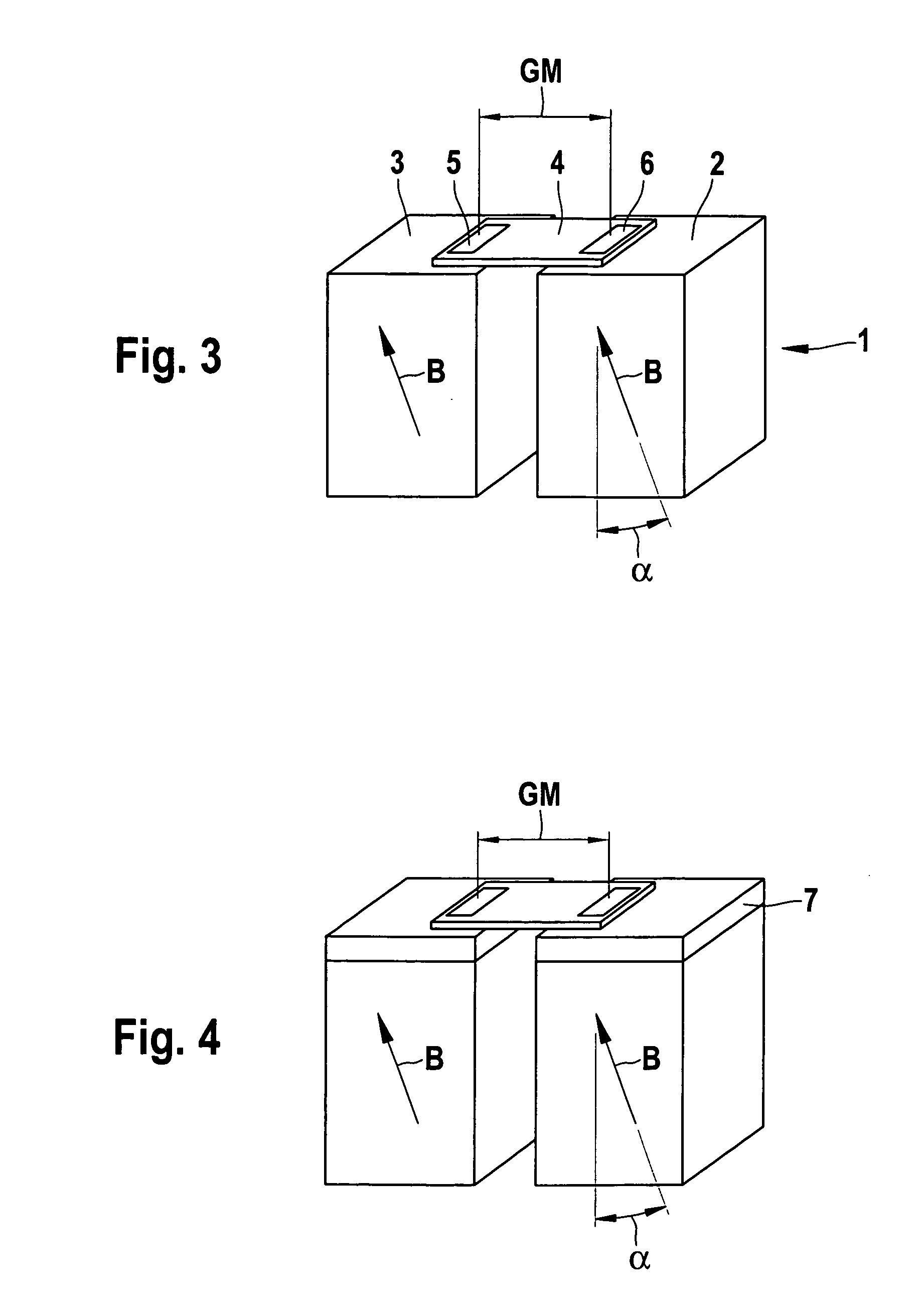Magnetic sensor system
a sensor and magnetic field technology, applied in the field of magnetic sensor systems, can solve the problems of inability to carry out, reduce use of magnets, etc., and achieve the effect of reducing the sensitivity of the sensor to homogeneous interference fields, and reducing the sensitivity of the sensor
- Summary
- Abstract
- Description
- Claims
- Application Information
AI Technical Summary
Benefits of technology
Problems solved by technology
Method used
Image
Examples
Embodiment Construction
[0022]FIG. 1 shows a schematic illustration of a magnetic sensor system 1 that includes two permanent magnets 2 and 3, the respective magnetic fields B of which are oriented with lines of flux shown in this illustration in the direction toward a sensor 4. In this case, sensor 4 is designed as an XMR sensor and has two magnetoresistive sensor elements 5 and 6. Sensor elements 5 and 6 are shown in a gradiometer system with gradiometer separation GM; they detect the changes in the particular field gradient caused, e.g., by 5 a metallic transmitter element, e.g., a toothed wheel shown in FIG. 5, that passes by magnetic sensor system 1.
[0023]The optimum working point of sensor 4 is adjusted via distance a between magnets 2 and 3 and can be adapted to the gradiometer separation GM of sensor elements 5 and 6. Furthermore, the courses of the lines of flux depend on the dimensions h, b and t of permanent magnets 2 and 3. Given a fixed gradiometer separation GM, e.g., 2.5 mm, the size, materi...
PUM
 Login to View More
Login to View More Abstract
Description
Claims
Application Information
 Login to View More
Login to View More - R&D
- Intellectual Property
- Life Sciences
- Materials
- Tech Scout
- Unparalleled Data Quality
- Higher Quality Content
- 60% Fewer Hallucinations
Browse by: Latest US Patents, China's latest patents, Technical Efficacy Thesaurus, Application Domain, Technology Topic, Popular Technical Reports.
© 2025 PatSnap. All rights reserved.Legal|Privacy policy|Modern Slavery Act Transparency Statement|Sitemap|About US| Contact US: help@patsnap.com



